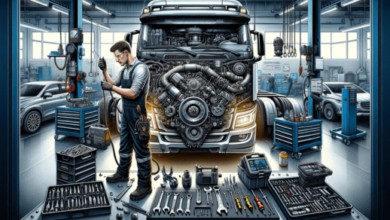When it comes to maintaining your vehicle, understanding its components is crucial. If you own a 2006 Ford F150 or are considering purchasing one, knowing the location of the starter is essential. The starter is a vital component that initiates the engine’s combustion process. In this guide, we’ll delve into the specifics of locating the starter on a 2006 Ford F150 and provide insights into its function.
Understanding the Starter: A Brief Overview
The starter is an electrical motor responsible for turning over the engine and initiating the combustion process. It draws electrical current from the battery and transfers it to the engine. Without a functional starter, your vehicle won’t start, and the engine won’t come to life.
Locating the Starter on a 2006 Ford F150
To locate the starter on a 2006 Ford F150, follow these steps:
Tools You’ll Need
Before you start, gather the following tools:
- Jack and jack stands
- Wrench set
- Socket set
- Safety goggles
- Work gloves
Step-by-Step Guide to Finding the Starter
- Safety First: Ensure the vehicle is parked on a level surface and the engine is cool. Safety goggles and work gloves are a must.
- Lift the Vehicle: Use a jack to lift the front of the vehicle and secure it with jack stands for added stability.
- Locate the Starter: The starter is typically located on the passenger side of the engine, near the bottom. It’s cylindrical in shape and has wires connected to it.
- Disconnect the Battery: Before you proceed, disconnect the negative terminal of the battery to prevent electrical shocks.
- Remove Wires: Carefully remove the wires connected to the starter. Make sure to remember their positions for reconnection later.
- Remove Mounting Bolts: Use a socket set to remove the mounting bolts that secure the starter to the engine.
- Replace the Starter: Once the old starter is removed, replace it with the new one and secure it with the mounting bolts.
- Reconnect Wires: Attach the wires to the new starter in the correct positions.
- Reconnect the Battery: Reconnect the negative terminal of the battery.
- Lower the Vehicle: Carefully lower the vehicle from the jack stands.
Signs of a Faulty Starter
Identifying signs of a faulty starter is crucial:
- Clicking sound when turning the key
- Grinding noise
- Engine not cranking
- Smoke coming from the starter
Importance of Maintaining the Starter
Regular maintenance ensures the starter’s longevity:
- Clean and tighten connections
- Inspect for wear and tear
- Lubricate moving parts
DIY Starter Replacement: Is it Feasible?
Replacing the starter yourself is possible, but it requires mechanical knowledge and tools.
Safety Precautions Before Working on the Starter
- Disconnect the battery
- Wear safety goggles and gloves
- Ensure the vehicle is stable on jack stands
Consulting the Owner’s Manual
Refer to the owner’s manual for specific instructions and diagrams related to your vehicle’s starter.
Professional Help: When to Seek It
If you’re not confident in your mechanical skills, it’s best to seek professional help for starter replacement.
Cost of Starter Replacement
The cost of replacing a starter can vary, including parts and labor.
Avoiding Starter Issues: Tips and Tricks
- Turn off electrical accessories before starting the engine
- Check battery health regularly
- Address other electrical issues promptly
Knowing the location of the starter on a 2006 Ford F150 is valuable information for any vehicle owner. Whether you’re planning to perform maintenance yourself or seeking professional help, understanding the starter’s role and how to locate it can save you time and money. Regular maintenance and prompt attention to starter issues contribute to the overall reliability of your vehicle.




